X-Men: First Class part 3
The grown-up Erik Lehnsherr has traveled to Switzerland, like Jason Bourne, to find something. Bourne was looking for himself, but Erik is looking for Dr. Schmidt, the Nazi doctor who wasn’t really a Nazi doctor, who mentored him and developed his metal-manipulation powers during WWII.
Erik has gotten into the bank by pretending to be a client with a bar of Nazi gold. The screenplay doesn’t indicate where he got this bar of gold, but he does mention that “it’s all that’s left of my people.” Did Erik, under orders from Schmidt, extract this gold from the teeth of Jews in Schmidt’s prison camp, remove jewelry hidden on their persons? He doesn’t say, but we shortly see him do both those things to the Swiss banker who resists giving up Schmidt’s current location. Erik says he’d like to kill the banker, since the banker apparently has plenty of ex-Nazi clients, but he stops at merely removing one of his fillings. We will see later that Erik has no trouble killing Nazis, why does he demur at the opportunity to kill the banker? Perhaps he’s worried the murder of a banker would draw undue attention to him. In any case, the banker gives Erik Schmidt’s current location (Argentina, the ex-Nazi’s favorite hiding place).
Now, we meet a new character, Moira MacTaggert, a CIA agent in Las Vegas tracking the members of the Hellfire Club, an international consortium of gangsters, politicos, army officers and industrialists. And so another strain of early-60s political reality is brought to bear on the narrative: the CIA-Mafia-Vegas-Cuba mishegas. Moira is supposed to be looking for communists infiltrating the US. In real life, the communist infiltration of the US was, of course, nonexistent, a political Trojan Horse designed by conservatives to demonize liberals and create an “other,” much as — you guessed it — Hitler had done with Jews in WWII. So we see here that Moira is merely a gentler Nazi, rooting out conspiracies where none exist, until she stumbles upon a real conspiracy that goes far beyond political ideology. The Cold War, like The War on Drugs and the War on Terror, was a massively expensive lie, designed to make people afraid and keep the engines of commerce running. The US never set up concentration camps to imprison Communists, but only because mass murder was bad for business, and besides, we had nuclear weapons, mass murder was on the table from the beginning, it was the defining principle of the era.
Moira, like many female spies before her, sees an opportunity to use sex to do some of her own infiltration of the Hellfire Club. That instinct ties her to Raven, and in fact puts her ahead of Raven as far as this narrative is concerned, since Raven has only used her powers of transformation to hide her ugliness up to this point.
Now, we meet Emma Frost, “associate to Sebastian Shaw,” and apparently a high-ranking member of the Hellfire Club. Emma, as we can see from the above photo, is, like Moira, not above using sex to distract, in this case to distract one Col Hendry, a military guy doing business with the club. The fact that Emma is played by January Jones, Betty Draper herself, ties Emma to the early 1960s and helps her own disguise in the minds of the audience: it’s the Mad Men era, women don’t have power, they are merely decoration. Beauty, we see, is just another label to make someone “other” in this world, to make them less than human. Just as Raven pretends to be beautiful to fit in and Moira takes off her clothes to infiltrate, Emma uses her beauty to appear to be merely decorative. Moira, who knows nothing of any of this, scoots in behind as more decor. She dodges the advances of passing industrialists to try to get to Col Hendry’s private booth, not suspecting anything about Emma beyond her role as a procurer, and finds the booth empty.
Now look who’s here, it’s Sebastian Shaw, or rather, it’s Dr. Schmidt, seventeen years later and calling himself Sebastian Shaw, or perhaps he was never Dr. Schmidt any more than he was a Nazi. He no longer has a mustache, he no longer has reading glasses and he hasn’t aged a day, but we know it’s the same guy because he still enjoys Edith Piaf.
What does Sebastian Shaw want? At the moment, Shaw wants Col Hendry to use his power as a military guy to put nuclear missiles in Turkey, for as-yet-unknown reasons. Col Hendry, upstanding military guy as he is, politely refuses Shaw’s desire, and Shaw introduces a new character, Riptide, who, apparently, can create small localized tornados. Shaw, we see, has a talent for collecting mutants (the ultimate “other”) to his side for nefarious purposes, and he uses Riptide’s skills to terrorize Hendry, then reveals that Emma has her own skills, as a mentalist, a transformer (turning herself into diamond — even her clothes — unless she, like Raven, is always naked) and a super-powered whistler. Emma’s super-powered whistling calls in Azazel, who has the power of teleportation (and might be Nightcrawler’s father, depending). Hendry, faced with the sudden appearance of a bunch of mutants with mind-bending powers (and he doesn’t know the half of it) is flummoxed — this is not the meeting he was anticipating when he came to Las Vegas for a good time on the tab of the Hellfire Club. Meanwhile Moira, in her underwear, makes her way into Shaw’s hidden office and finds a stack of Russian documents on his desk, like a cub reporter stumbling onto a big story.
Next thing we know, we’re at the Pentagon’s War Room, or rather, we’re in Ken Adam’s set for Kubrick’s Dr. Strangelove‘s war room, and we are reminded of the importance of design. Design, like smell, cuts to the heart of memory and brings with it a wealth of associations. To tie First Class to Dr. Strangelove is to obviate issues of taste — Dr. Strangelove was a blistering comedic attack on the Cold War, while it was happening. The issues raised were serious as a heart attack to its audience. It didn’t have mutants but it did raise the question of human evolution, Nazism and the repressed dream of a master race.
We’re at the War Room because that’s where CIA director McCone is, and he is, right now, talking to Moira on the phone about Col Hendry’s collusion with Shaw, who she thinks is a Russian agent. Moira, it seems, is pretty high-placed operative if she can get the attention of the Director while he’s in a meeting in the War Room, but McCone disregards her call — Col Hendry is right there in the War Room with him, transported by Azazel, talking about how he wants to put missiles in Turkey. Historically, of course, there would be no Moira MacTaggert in the CIA in 1962, that’s another fib told to us by the entertainment industry. The CIA didn’t have sexy young female operatives, that’s something that sprang from the world of James Bond, which First Class also consciously invokes in its historical-cultural mashup, even to the point of giving Erik Bond’s suit from Goldfinger.
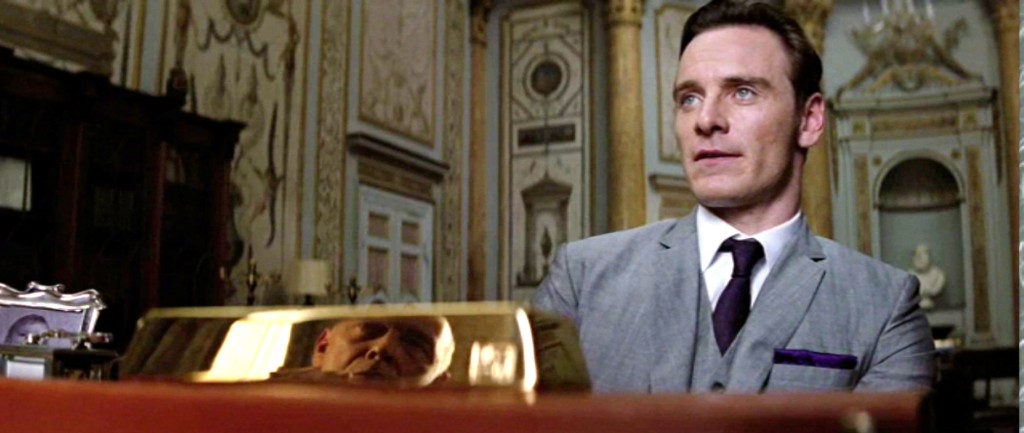
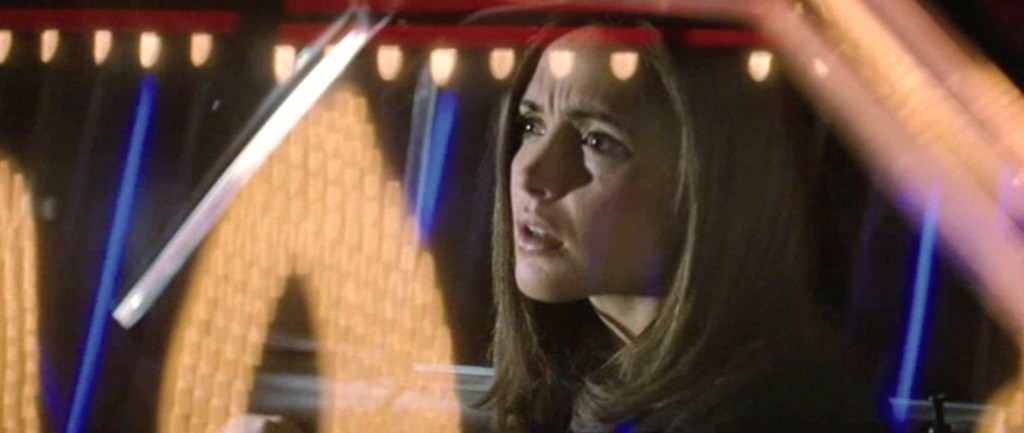
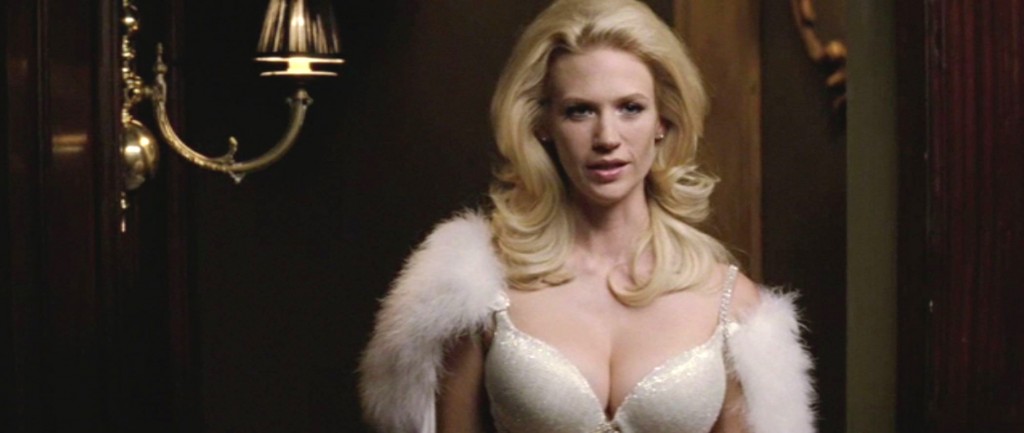
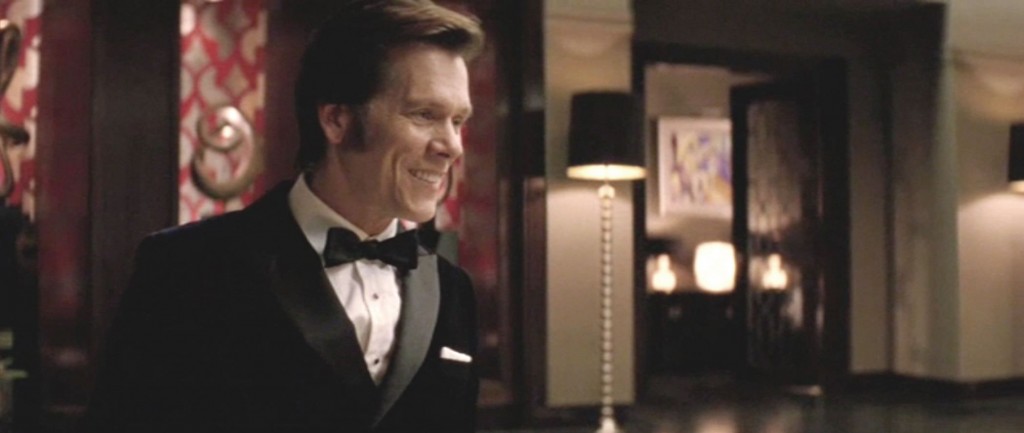
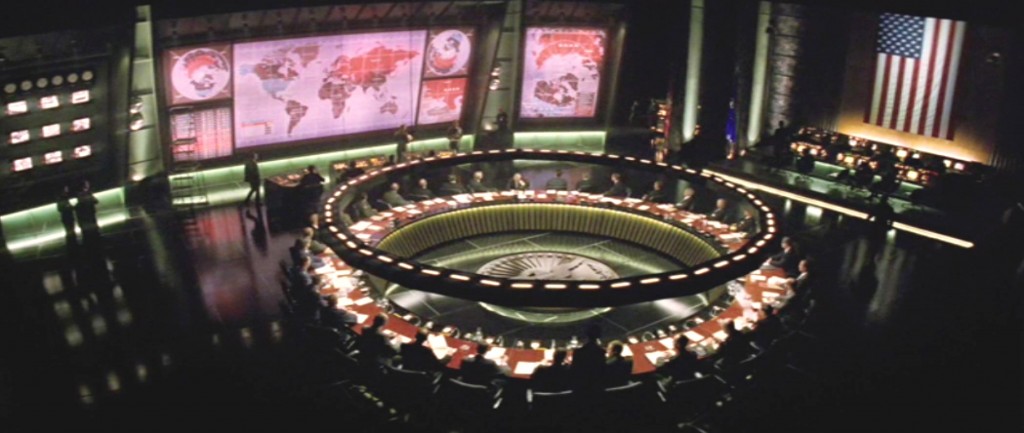
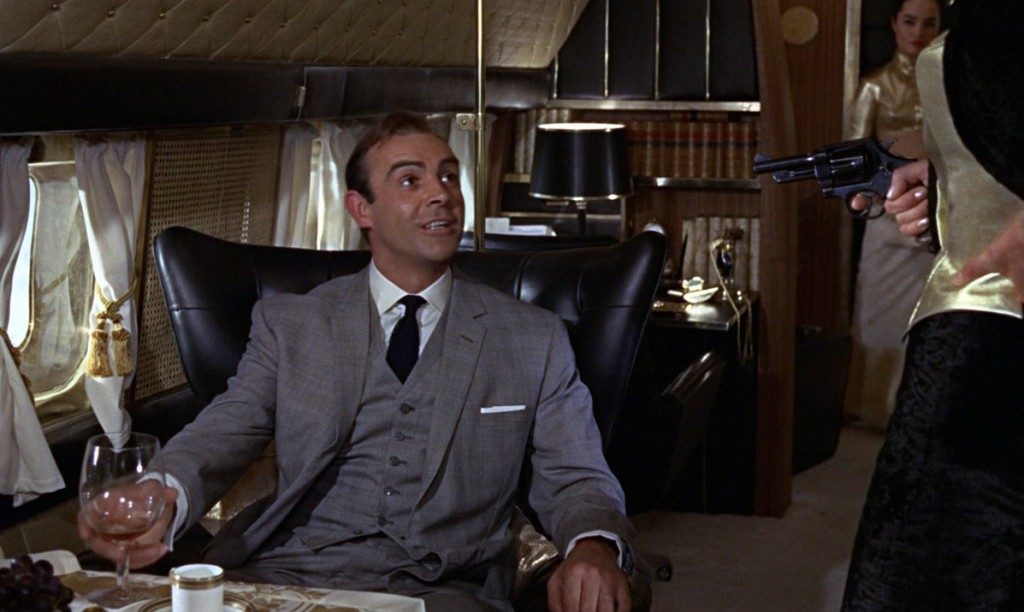
That makes me curious about the history of female agents in the CIA. I suspect that they did something unofficial long before they did anything official — because women can go places men can’t, and can exploit opportunities that men can’t, just as the reverse is true, and the CIA would be dumb to ignore that — but a quick Google search has failed to turn up the name and dates for the first female agent for me.
That’s probably exactly right — women probably performed duties for the CIA before they were operatives. The FBI was the most retrograde government organization in the world until recently, they didn’t employ anyone who wasn’t white and male and (publicly) straight. I can’t imagine the early CIA had many comely young operatives working for them either.
Officially, no. But I doubt they were blind to the uses of comely young things, off the books.
I’m 99% sure there were female operatives in the OSS–the precursor to the CIA. I remember reading about them (don’t have a cite right now) and they were trained, credentialed, etc. So I think Todd is wrong on that count–but right about the FBI.
The OSS was born out of an incredible dirty-tricks squad that was dedicated to winning WWII by any means necessary and sex and invisibility (socially) were certainly two of those means.
There were definitely female operatives in both the OSS and the SOE (the British Commonwealth equivalent). You can read about the former in Elizabeth McIntosh’s book Sisterhood of Spies, while Ian Fleming drew upon his experiences in British intelligence during WWII and based some of the Bond girls on the exploits of Krystyna Skarbek AKA Christine Granville, one of the most noteworthy female SOE agents.
The CIA, however, had few female operatives on the payroll, but for the first few decades of its existence it was rare to find any operative who wasn’t an upper-class WASP male with a Ivy League education. But according to former CIA operative Valerie Plame Wilson, there were a few: http://www.thedailybeast.com/articles/2010/01/24/the-women-of-the-cia.html
Sartorially, Erik’s suit has a purple pocket square rather than a white one, which I think coordinates nicely with his tie.
And ties in with his later Magneto colors.
I know Emma Frost’s outfit isn’t all that much more revealing than, say, Wonder Woman’s, but it looks overtly like kinky fetishwear in a way that most superhero costumes don’t. Even though my daughter likes X-Men, I avoid letting her read X-Men comics that have Emma Frost in them for that reason. And since Emma Frost has become a major character in the comics (she’s now one of the X-Men AND Cyclops’ lover), that rules out most of them.
Emma’s outfits start at “revealing” and graduate to “absurd.” But even that is not the point: Emma’s personality is what makes her revealing outfits “dirty” — she uses them as a tease and a provocation.
Now if only more comic book artists recognized that there should be a difference between how Emma Frost dresses and how every other female character they draw dresses . . . .
That’s it precisely. I don’t have as much issue with Emma Frost’s outfits because a) the diamond skin means questions of armour or protection are sidestepped, and b) it fits her character so well. The same can’t be said of 90% of female comic book heroes out there. E.g., It’s idiotic that Huntress, a street-level vigilante with no superpowers who uses crossbows–not sex–as her weapon and who was once stabbed in the stomach would be wearing a midriff bearing top.
The communist infiltration wasn’t what McCarthy though it was, but nor was it nonexistent. The Mitrokhin Archive put that wishful thinking to bed. Anyway, the whole paragraph of yours, Todd, was an excellent example of the underlying belief that the only thing worth war is to avoid future war. Nearly a psychological case study, as it were.
Also wanted to mention that the communist infiltration was real, and (not to McCarthy-extent) there were some communist/soviet agents working for the government. I took a course in college and that data is all found in declassified documents from former soviet union territories.